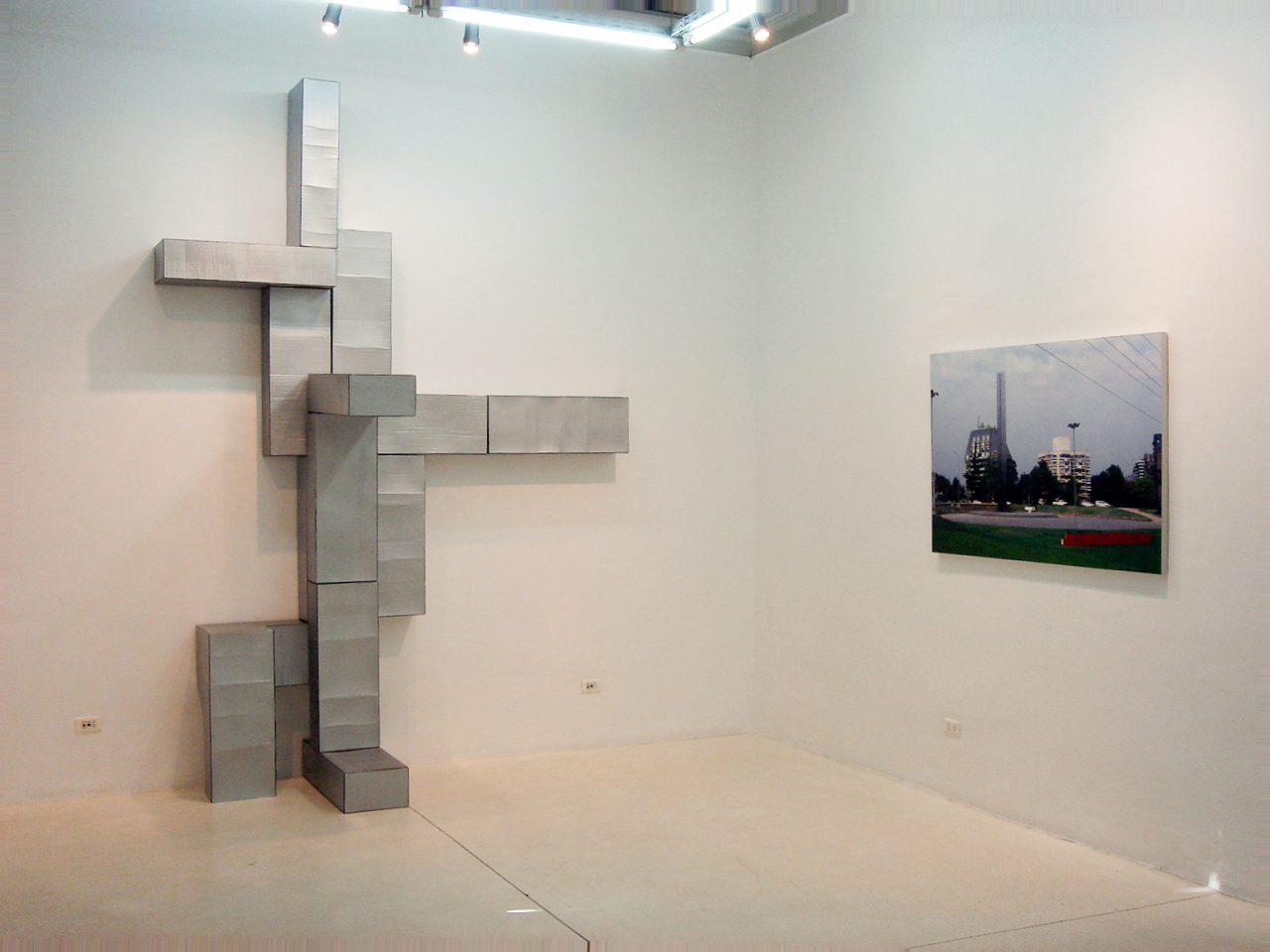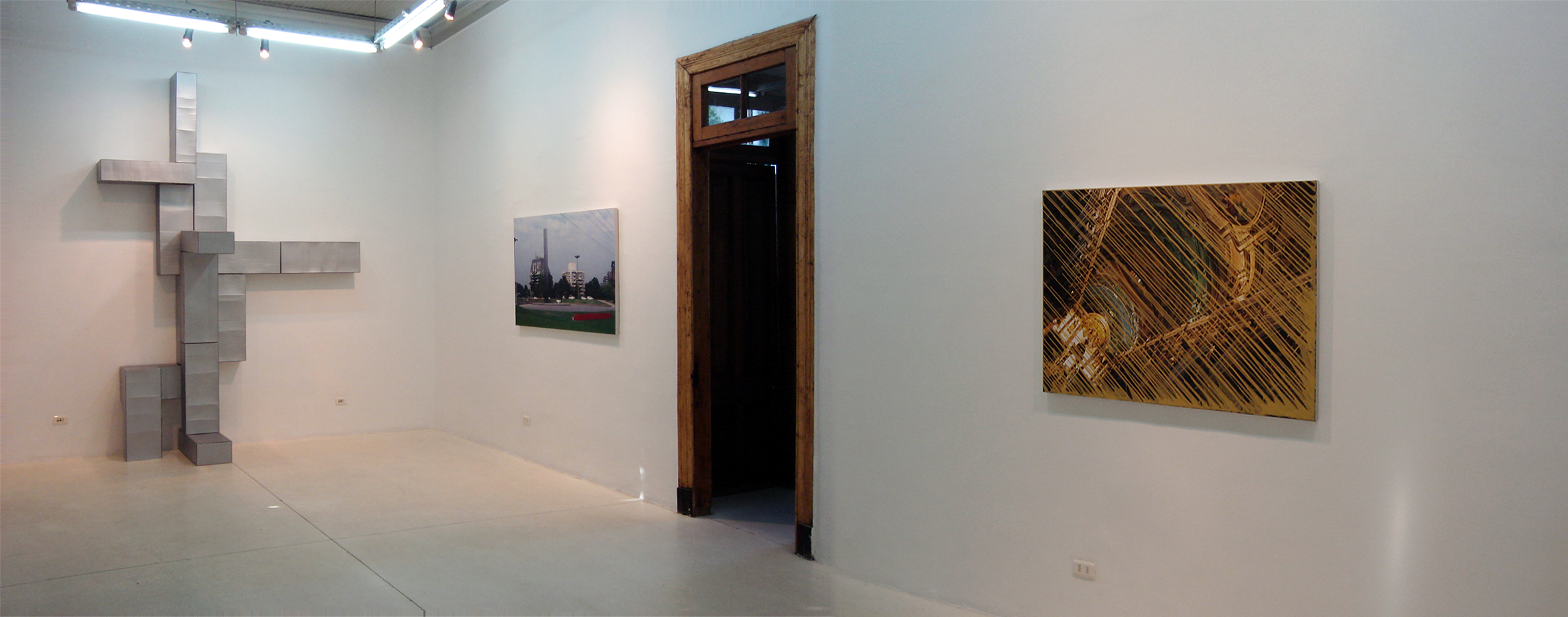Zabriskie Point, fue una exposición bi-personal junto al artista Gerardo Pulido y se realizó en la galería de arte Die Ecke en 2007.
El título es el de una película de Michelangelo Antonioni, y se refiere a un lugar inhóspito en el desierto de los Estados Unidos, específicamente en el Valle de la Muerte. Zabriskie Point es un punto desde donde se puede tener una vista panorámica del desierto en primer lugar, quizá un punto desde el cual se puede tomar una especial distancia respecto del mundo. Pero lo que nos interesaba era la película y su entramado en el que se expone no sólo una especie de desajuste entre utopía y realidad, sino el fin de la utopía y el triunfo de una forma de pragmatismo macabro: el de la corrupción político-económica. Esto, en la película se exhibe a través de las fuertes contradicciones que se presentan en la narración entre política y subjetividad, y metafóricamente a partir de la historia amorosa de una pareja de jóvenes.
Zabriskie Point es un punto en la geografía, es real (un lugar) pero es, al mismo tiempo, imaginario (es un símbolo y un punto de vista) lo cual, se vincula al sentido y significación de nuestros trabajos pues reelaboramos y cruzamos símbolos artísticos, religiosos y urbanísticos. La idea o lo que surgió al trabajar con estas referencias es que pusimos de relieve, al mismo tiempo que impugnamos, imágenes seculares y de culto, de tradición y ruptura: la escultura constructivista por contraposición al paradigma minimalista, la iconografía sacra contrapuesta al brillo sintético del aerosol dorado y plateado, la cuadrícula, el monumento, la calle, la fotografía, la pintura, la ciudad, lo clásico, lo barroco, el templo, el arte.
(English)
Zabriskie Point was a two-person exhibition with the artist Gerardo Pulido and was held at the Die Ecke art gallery in 2007.
Zabriskie Point is a point in geography, it is real (a place) but it is, at the same time, imaginary (it is a symbol and a point of view) which is linked to the meaning and significance of our work because we rework and cross artistic symbols, modern art, religious imagery and urban planning. The idea or what emerged when working with these references is that we highlighted, while we challenged, secular and cult images, of tradition and rupture: constructivist sculpture as opposed to the minimalist paradigm, sacred iconography as opposed to the synthetic brilliance of the gold and silver spray, the grid, the monument, the street, photography, painting, the city, the classic, the baroque, the temple, the Art.
The title is that of a film by Michelangelo Antonioni and refers to an inhospitable place in the desert of the United States, specifically Death Valley. Zabriskie Point is a point from where you can have a panoramic view of the desert, perhaps a point from which you can take a special distance from the world. But what interested us was the film and its intrigue in which not only a kind of mismatch between utopia and reality is exposed, but also the end of utopia and the triumph of a form of macabre pragmatism: that of political-economic corruption. This, in the film, is exhibited through the strong contradictions that are presented in the narrative between politics and subjectivity, and metaphorically through the love story of a young couple.
Zabriskie Point (2007)
Exposición bi personal junto al Artista Gerardo Pulido M.
Galería Die Ecke Arte Contemporáneo, Santiago, Chile.


